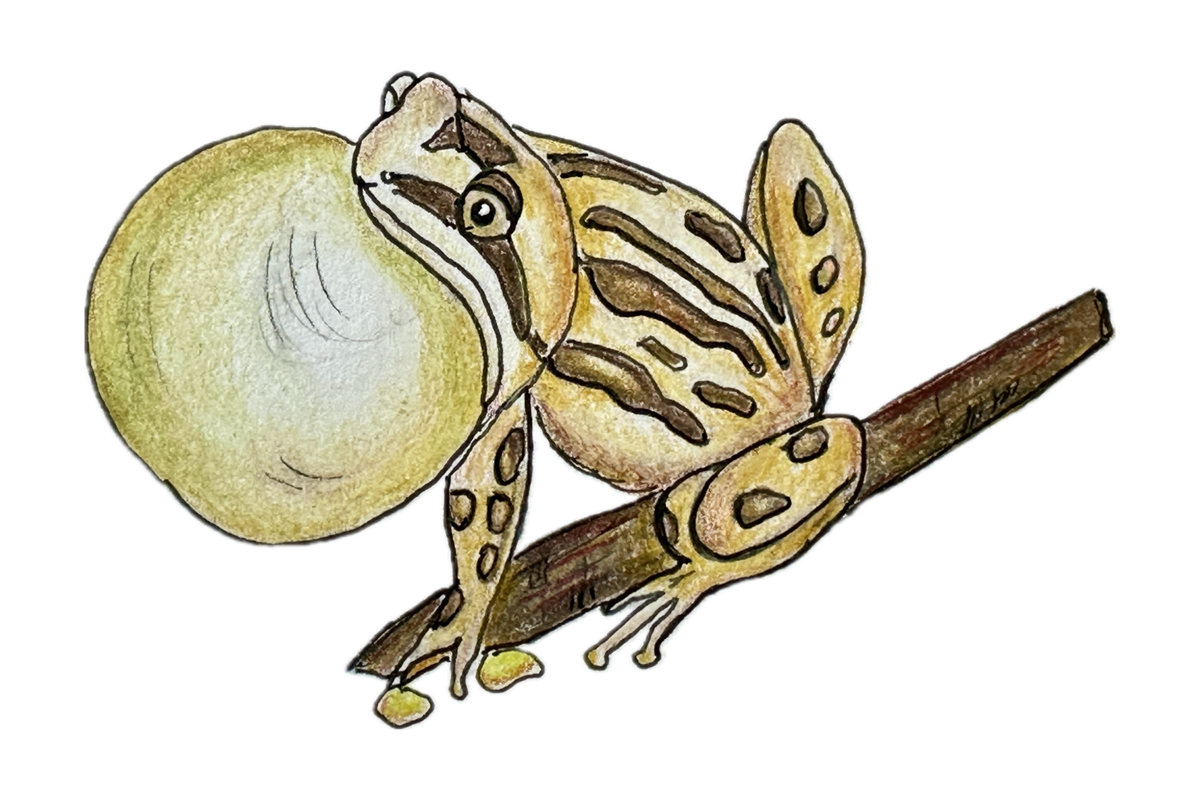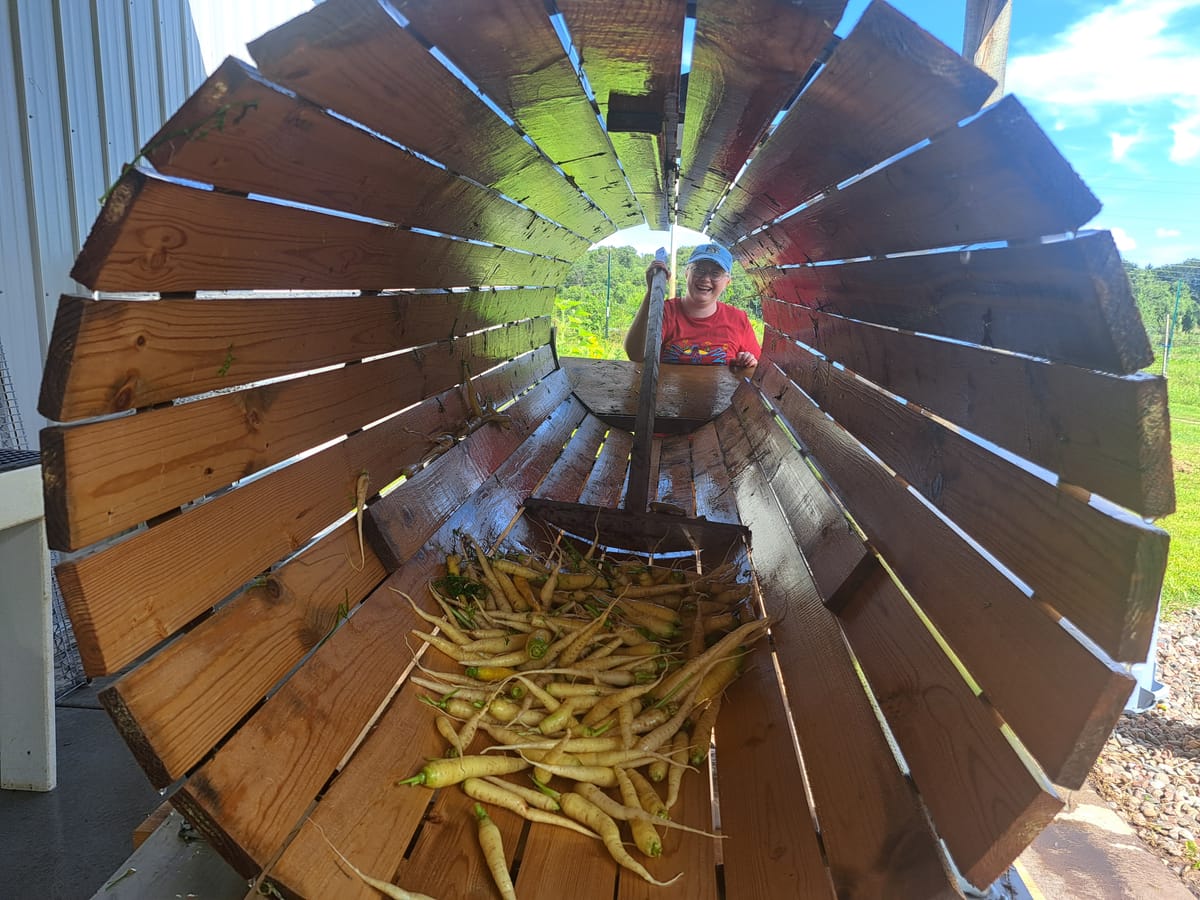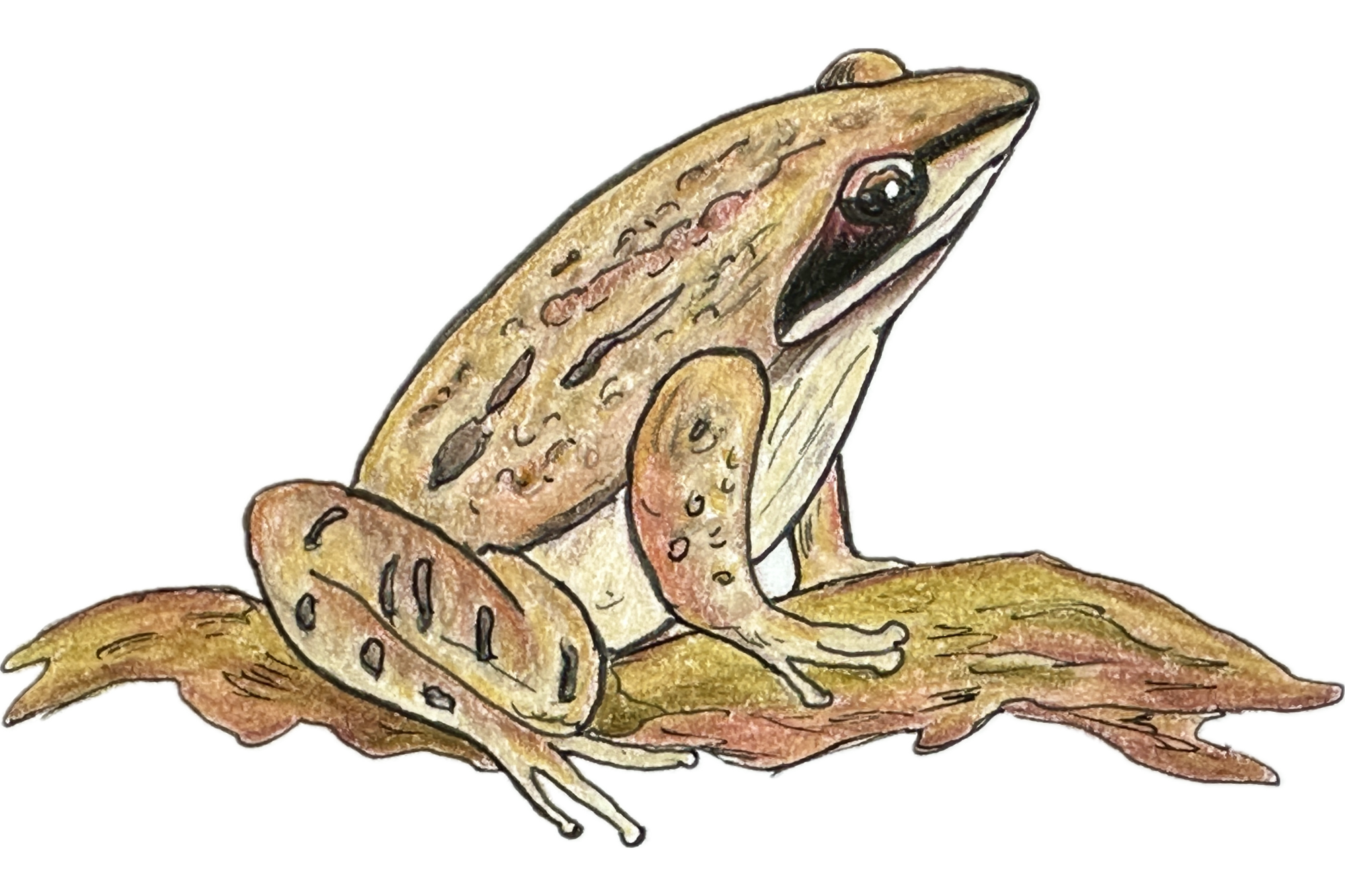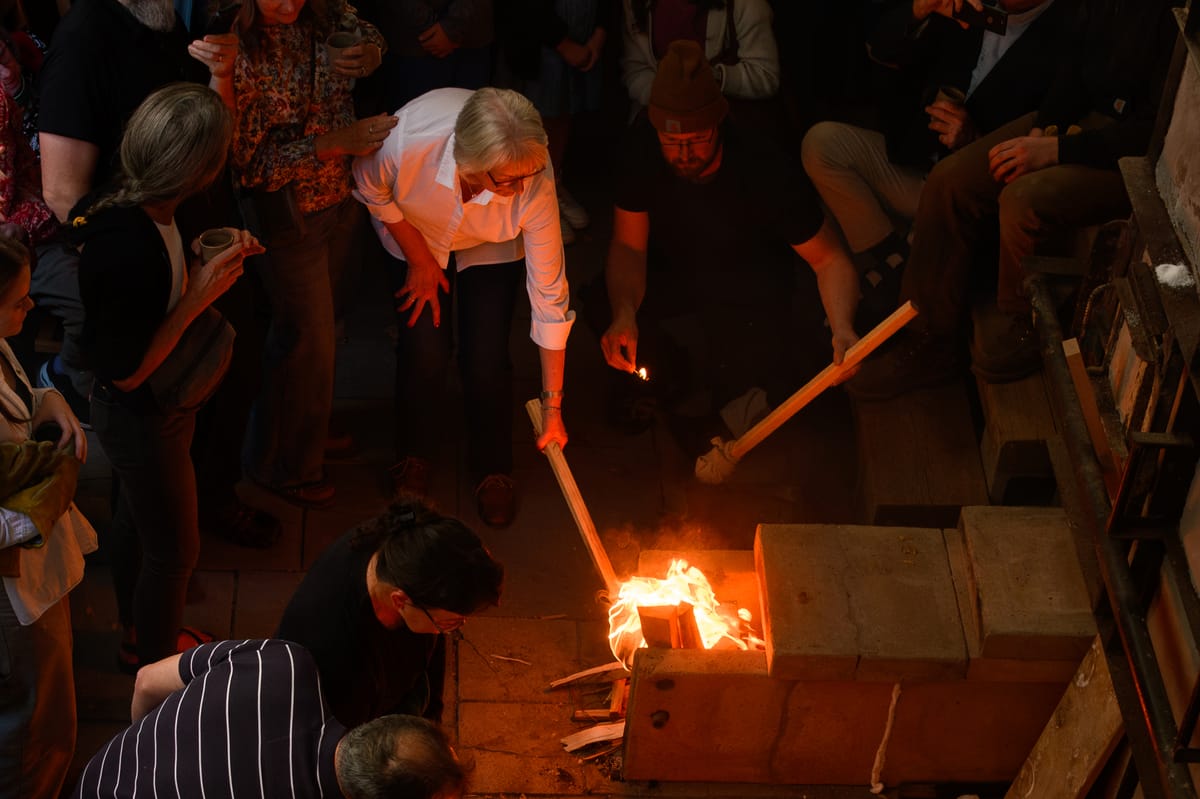Drawn by Nature: Frog chorus signals healthy ecosystem
Some of Minnesota’s tiniest frogs make big sounds, often before ice is out on most lakes.

Songbirds tend to get the most credit when it comes to the sweetest sounds of spring. Their lilting, melodic songs fill the mornings from dawn into the daytime.
But keep an ear open to another jubilant indicator of a healthy ecosystem: amphibians.
Some of Minnesota’s tiniest frogs — wood frogs, boreal chorus frogs, and spring peepers — make big sounds, often before ice is out on most of Minnesota’s lakes.
“They are really loud,” said Ken Kozak, curator of herpetology for the University of Minnesota’s Bell Museum of Natural History. “You can hear them, under the right circumstances, from over a mile away.”
By inflating vocal sacs on their larynx, frogs can amplify their calls.
“It’s like speakers,” he said. “They generally start at dusk and continue into the wee hours of the morning.”
Frogs freeze and thaw
They can get a jump on mating season with their early emergence from the leaves and forest litter they tunnel into during the fall.
Minnesota has 14 different frogs and toads that live in its various landscapes. Most burrow into the mud.
 Project OptimistLisa McClintick
Project OptimistLisa McClintick
Unlike some other amphibians that burrow deep below the frost line or into lakes for the winter, these little frogs flood their bodies with a glucose equivalent of antifreeze. It allows their bodies to basically freeze for the winter without harming them at the cellular level.
When the weather warms enough, the frogs’ organs thaw: their hearts beat again, their lungs fill with air, and their brains start moving their limbs again. It’s essential to attract mates early and lay eggs before spring puddles, ponds, creeks, and other waterways dry up in the summer.
Look for eggs and tadpoles
Frogs can be prolific when it comes to laying eggs, sometimes up to 3,000 in the case of wood frogs. The females leave the gelatinous blobs attached to aquatic plants. Small ephemeral pools such as prairie potholes and seasonal ponds can be an advantage because they don’t have fish that will gobble the eggs and tadpoles.

Other predators include birds, fish, mammals, reptiles, and other amphibians. Insects such as dragonflies and water beetles will eat frog eggs and tadpoles.
Wood frog eggs hatch within three weeks, and tadpoles spend the next six to nine weeks eating and growing, sprouting limbs that replace their tails, and developing lungs that replace gills as they transition from the aquatic world to land.
Once they’re grown, the frogs need to elude a new roster of predators, including foxes, snakes, badgers, weasels, raptors, herons and gulls, turtles, otters, and a variety of fish from northern pike and walleye to bass.
“They’re a very important part of the food web,” said Kozak, but they’re often overlooked because they tend to be secretive, well-hidden, and come out only at night as part of their survival. “[Amphibians are] just as important as birds and mammals.”
Loud songs signal health
If spring comes and wetlands or ponds are quiet, it can signal a disruption in the local ecosystem and indicate problems such as polluted water, whether from farm field chemicals or too much salt washing off roads.

Frogs are considered an indicator species “like a canary in a coal mine,” Kozak said. “They’re sensitive to changes in the environment.”
That makes hearing them, with April’s almost-deafening chorus, something to celebrate as much as bird songs are part of spring’s joyous soundscape.
 Project OptimistLisa McClintick
Project OptimistLisa McClintick
A guide to the early chorus of frogs
Here’s a look at three of Minnesota’s contributors to the spring soundtrack and how you can recognize their call. Wood frogs and boreal chorus frogs can start to breed in late March and run through April. Spring peepers usually breed from early April to early May.
It’s much easier to find them using your ears than your eyes. They blend expertly with spring landscapes.
Spring peeper frogs
Measuring 1.25 inches long or less, these tiny, tan tree frogs have a brown X on their backs. Their calls are loud, high-pitched peeps.
Boreal chorus frogs
Minnesota’s smallest frog, the boreal chorus frog (sometimes called the Western chorus frog) ranges from 0.75-1.5 inches in length. Their tan skin can range to gray or red with three dark stripes from their heads down their backs and additional lines through their eyes.
They make creeee sounds similar to the sounds of a finger running across the teeth of a comb.
Wood frogs
These brown or reddish-brown frogs range from 2-2.75 inches long with a black patch along their eyes like a bandit’s mask. Their calls sound like racket, racket, racket, or distorted clucking.
This column was edited and fact-checked by Jen Zettel-Vandenhouten.
